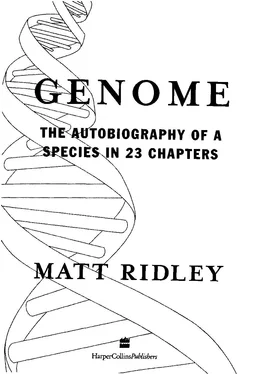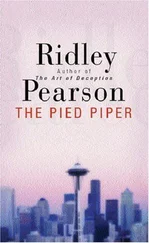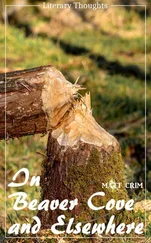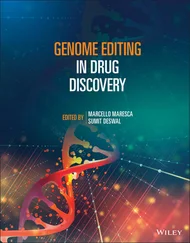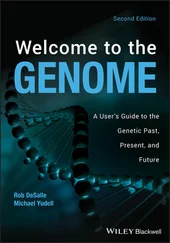Genome - Matt Ridley
Здесь есть возможность читать онлайн «Genome - Matt Ridley» — ознакомительный отрывок электронной книги совершенно бесплатно, а после прочтения отрывка купить полную версию. В некоторых случаях можно слушать аудио, скачать через торрент в формате fb2 и присутствует краткое содержание. Жанр: Старинная литература, на английском языке. Описание произведения, (предисловие) а так же отзывы посетителей доступны на портале библиотеки ЛибКат.
- Название:Matt Ridley
- Автор:
- Жанр:
- Год:неизвестен
- ISBN:нет данных
- Рейтинг книги:5 / 5. Голосов: 1
-
Избранное:Добавить в избранное
- Отзывы:
-
Ваша оценка:
- 100
- 1
- 2
- 3
- 4
- 5
Matt Ridley: краткое содержание, описание и аннотация
Предлагаем к чтению аннотацию, описание, краткое содержание или предисловие (зависит от того, что написал сам автор книги «Matt Ridley»). Если вы не нашли необходимую информацию о книге — напишите в комментариях, мы постараемся отыскать её.
Matt Ridley — читать онлайн ознакомительный отрывок
Ниже представлен текст книги, разбитый по страницам. Система сохранения места последней прочитанной страницы, позволяет с удобством читать онлайн бесплатно книгу «Matt Ridley», без необходимости каждый раз заново искать на чём Вы остановились. Поставьте закладку, и сможете в любой момент перейти на страницу, на которой закончили чтение.
Интервал:
Закладка:
2. Lingner, J., Hughes, T. R., Shevchenko, A., Mann, M., Lundblad, V. and B I B L I O G R A P H Y A N D N O T E S 3 2 9
Cech, T. R. (1997). Reverse transcriptase motifs in the catalytic subunit of telomerase. Science 276: 561—7.
3. Clark, M. S. and Wall, W. J. (1996). Chromosomes: the complex code. Chapman and Hall, London.
4. Harrington, L., McPhail, T., Mar, V., Zhou, W., Oulton, R, Bass, M. B., Aruda, I. and Robinson, M. O. (1997). A mammalian telomerase-associated protein. Science 275: 973-7; Saito, T., Matsuda, Y., Suzuki, T., Hayashi, A., Yuan, X., Saito, M., Nakayama, J., Hori, T. and Ishikawa, F. (1997). Comparative gene-mapping of the human and mouse TEP-1 genes, which encode one protein component of telomerases. Genomics 46: 46—50.
5. Bodnar, A. G. et al. (1998). Extension of life-span by introduction of telomerase into normal human cells. Science 279: 349—52.
6. Niida, H., Matsumoto, T., Satoh, H., Shiwa, M., Tokutake, Y., Furuichi, Y. and Shinkai, Y. (1998). Severe growth defect in mouse cells lacking the telomerase RNA component. Nature Genetics 19: 203—6.
7. Chang, E. and Harley, C. B. (1995). Telomere length and replicative aging in human vascular tissues. Proceedings of the National Academy of Sciences of the USA 92: 11190—94.
8. Austad, S. (1997). Why we age. John Wiley, New York.
9. Slagboom, P. E., Droog, S. and Boomsma, D. I. (1994). Genetic determination of telomere size in humans: a twin study of three age groups. American Journal of Human Genetics 55: 876—82.
10. Ivanova, R et al. (1998). HLA-DR alleles display sex-dependent effects on survival and discriminate between individual and familial longevity. Human Molecular Genetics 7: 187—94.
11. The figure of 7,000 genes is given by George Martin, quoted in Austad, S. (1997). Why we age. John Wiley, New York.
12. Feng, J. et al. (1995). The RNA component of human telomerase. Science 269: 1236—41.
C H R O M O S O M E 1 5
Wolf Reik and Azim Surani's Genomic imprinting (Oxford University Press, 1997) is a good collection of essays on the topic of imprinting. Many books explore gender differences including my own The Red Queen (Viking, 3 3 0 G E N O M E
1. Holm, V. et al. (1993). Prader-Willi syndrome: consensus diagnostic criteria. Pediatrics 91: 398—401.
2. Angelman, H. (1965). 'Puppet' children. Developmental Medicine and Child Neurology 7: 681—8.
3. McGrath, J. and Solter, D. (1984). Completion of mouse embryogenesis requires both the maternal and paternal genomes. Cell 37: 179—83; Barton, S. C, Surami, M. A. H. and Norris, M. L. (1984). Role of paternal and maternal genomes in mouse development. Nature 311: 374—6.
4. Haig, D. and Westoby, M. (1989). Parent-specific gene expression and the triploid endosperm. American Naturalist 134: 147—55.
5. Haig, D. and Graham, C. (1991). Genomic imprinting and the strange case of the insulin-like growth factor II receptor. Cell 64: 1045—6.
6. Dawson, W. (1965). Fertility and size inheritance in a Peromyscus species cross. Evolution 19: 44—5 5; Mestel, R. (1998). The genetic battle of the sexes.
Natural History 107: 44—9.
7. Hurst, L. D. and McVean, G. T. (1997). Growth effects of uniparental disomies and the conflict theory of genomic imprinting. Trends in Genetics 13: 436—43; Hurst, L. D. (1997). Evolutionary theories of genomic imprinting. In Reik, W. and Surani, A. (eds), Genomic imprinting, pp. 211-37. Oxford University Press, Oxford.
8. Horsthemke, B. (1997). Imprinting in the Prader-Willi/Angelman syndrome region on human chromosome 15. In Reik, W. and Surani, A. (eds), Genomic imprinting, pp. 177-90. Oxford University Press, Oxford.
9. Reik, W. and Constancia, M. (1997). Making sense or antisense? Nature 389: 669—71.
10. McGrath, J. and Solter, D. (1984). Completion of mouse embryogenesis requires both the maternal and paternal genomes. Cell 37: 179-83.
11. Jaenisch, R. (1997). DNA methylation and imprinting: why bother?
Trends in Genetics 13: 323—9.
12. Cassidy, S. B. (1995). Uniparental disomy and genomic imprinting as causes of human genetic disease. Environmental and Molecular Mutagenesis 25, Suppl. 26: 13-20; Kishino, T. and Wagstaff, J. (1998). Genomic organisation of the UBE3A/E6-AP gene and related pseudogenes. Genomics 47: 101—7.
13. Jiang, Y., Tsai, T.-F., Bressler, J. and Beaudet, A. L. (1998). Imprinting in Angelman and Prader-Willi syndromes. Current Opinion in Genetics and Development 8: 334—42.
14. Allen, N. D., Logan, K., Lally, G., Drage, D. J., Norris, M. and Keverne, B I B L I O G R A P H Y A N D N O T E S 3 3 1
E. B. (1995). Distribution of pathenogenetic cells in the mouse brain and their influence on brain development and behaviour. Proceedings of the National Academy of Sciences of the USA 92: 10782—6; Trivers, R. and Burt, A. (in preparation), Kinship and genomic imprinting.
15. Vines, G. (1997). Where did you get your brains? New Scientist, 3 May 1997: 34-9; Lefebvre, L., Viville, S., Barton, S. C, Ishino, F., Keverne, E. B. and Surani, M. A. (1998). Abnormal maternal behaviour and growth retardation associated with loss of the imprinted gene Mest. Nature Genetics 20: 163—9.
16. Pagel, M. (1999). Mother and father in surprise genetic agreement. Nature 397: 19-20.
17. Skuse, D. H. et al. (1997). Evidence from Turner's syndrome of an imprinted locus affecting cognitive function. Nature 387: 705—8.
18. Diamond, M. and Sigmundson, H. K. (1997). Sex assignment at birth: long-term review and clinical implications. Archives of Pediatric and Adolescent Medicine 151: 298-304.
C H R O M O S O M E 1 6
There are no good popular books on the genetics of learning mechanisms.
A good textbook is: M. F. Bear, B. W. Connors and M. A. Paradiso's Neuroscience: exploring the brain (Williams and Wilkins, 1996).
1. Baldwin, J. M. (1896). A new factor in evolution. American Naturalist 30: 441-51, 536-53.
2. Schacher, S., Castelluci, V. F. and Kandel, E. R. (1988). cAMP evokes long-term facilitation in Aplysia neurons that requires new protein synthesis.
Science 240: 1667—9.
3. Bailey, C. H., Bartsch, D. and Kandel, E. R. (1996). Towards a molecular definition of long-term memory storage. Proceedings of the National Academy of Sciences of the USA 93: 12445 — 52.
4. Tully, T., Preat, T., Boynton, S. C. and Del Vecchio, M. (1994). Genetic dissection of consolidated memory in Drosophila. Cell 79: 39-47; Dubnau, J. and Tully, T. (1998). Gene discovery in Drosophila: new insights for learning and memory. Annual Review of Neuroscience 21: 407—44.
5. Silva, A. J., Smith, A. M. and Giese, K. P. (1997). Gene targeting and 3 3 2 G E N O M E
the biology of learning and memory. Annual Review of Genetics 31: 527—46.
6. Davis, R. L. (1993). Mushroom bodies and Drosophila learning.
Neuron 11: 1-14; Grotewiel, M. S., Beck, C. D. O., Wu, K. H., Zhu, X.-R.
and Davis, R. L. (1998). Integrin-mediated short-term memory in Drosophila.
Nature 391: 455—60.
7. Vargha-Khadem, F., Gadian, D. G., Watkins, K. E., Connelly, A., Van-Paesschen, W. and Mishkin, M. (1997). Differential effects of early hippo¬
campal pathology on episodic and semantic memory. Science 277: 376—80.
Читать дальшеИнтервал:
Закладка:
Похожие книги на «Matt Ridley»
Представляем Вашему вниманию похожие книги на «Matt Ridley» списком для выбора. Мы отобрали схожую по названию и смыслу литературу в надежде предоставить читателям больше вариантов отыскать новые, интересные, ещё непрочитанные произведения.
Обсуждение, отзывы о книге «Matt Ridley» и просто собственные мнения читателей. Оставьте ваши комментарии, напишите, что Вы думаете о произведении, его смысле или главных героях. Укажите что конкретно понравилось, а что нет, и почему Вы так считаете.
